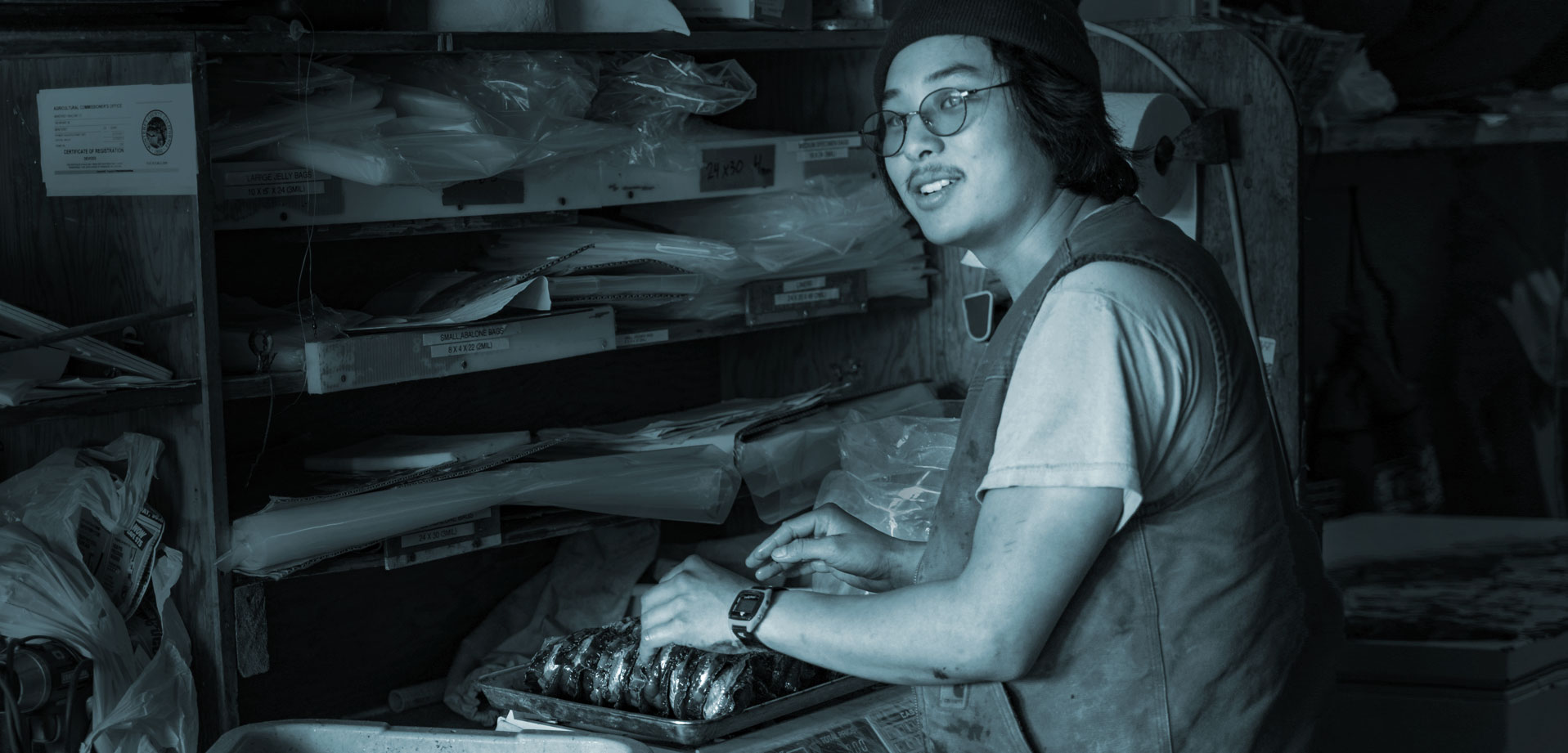Coastal Job: Abalone Farmer
Andrew Kim raises a coveted shellfish under a California pier.
Article body copy
Some people work in cubicles, others work in kitchens, but the most intriguing workplace of all may be the coast. Meet the people who head to the ocean instead of the office in our Coastal Jobs series.
Andrew Kim raises abalone on a farm that has operated under a commercial wharf in Monterey, California, for more than 30 years, supplying abalone to high-end restaurants. Kim manages a team of farmers who spend their days harvesting wild kelp to feed the abalone, pressure-washing cages, and warding off ocean predators.
The farm is its own world. When you describe the structure and the way it operates, it sounds made up. Most people who walk around that wharf have no idea what’s going on underneath. Monterey Abalone Company is the only in-ocean abalone farm in the country, and is probably the only one in the world under a wharf. It makes use of an otherwise unusable space for a really unique and sustainable shellfish operation.
You walk into the office on the wharf, above the farm, where we pack orders, and there’s a hole in the floor. You climb down a ladder into a dark, damp environment and onto some wooden walkways that we custom-built. There’s just enough space to stand or crouch between the underside of the wharf and the water. The walkways form a sort of wooden grid, with cutouts where we can pull up the cages. Through the cutouts you can look straight down to where the cages—we call them condos—are submerged at a depth of 15 feet [4.5 meters]. The only source of light comes from a bunch of LED bulbs that we hang from various hooks on the ceiling. They get moved around the farm depending on where we work; we call it our modular lighting system.
We keep a boat hoisted up to the ceiling and take it down when we need to get a load of kelp, which we’re licensed to harvest from the nearby area. To collect it, we lean over the side of the boat with a kitchen knife.
Our abalone are pretty spoiled; they just eat kelp all day. It takes four years to produce our smallest market size—which is about three and a half inches [nine centimeters]—and six to seven years to produce our largest “abs,” which are five and a half inches [14 centimeters]. Every day is different: getting kelp, feeding abs, responding to emails, filling orders for local restaurants. There are never enough hours for our crew of 10 to get everything done.
We share the space with a lot of other animals. Sea lions are loud and farty. They climb on top of cages we’ve pulled up and knock them into the water. Then we have to dive for them or fish them out using a treble hook made out of rebar.
Pigeons also roost under the wharf. It gets really windy under there and occasionally a pigeon ends up in the water and can’t get out. We can save them with a pool net and let them dry off in the sun, but if we’re too slow, the seagulls will kill them.
Predatory animals get into the cages sometimes. Crabs crawl in when they’re small and eat and molt until they’re too big to get out. If we see them, we toss them back into the water. Same with octopuses. While not predatory, Melibe nudibranchs get in as well. We smell ’em before we see ’em—they smell like watermelon Jolly Ranchers. I haven’t eaten one, but I’ve licked one. They don’t taste like they smell, that’s for sure.
I grew up in a very traditional Korean immigrant household in the inner city in Los Angeles. I didn’t spend a lot of time in the water, but when I found marine bio in college, it just clicked. Working on the farm feels like doing scientific fieldwork every day. It gives me this perspective of being a part of the life that surrounds the wharf, rather than, Oh, I’m just farming abalone.

